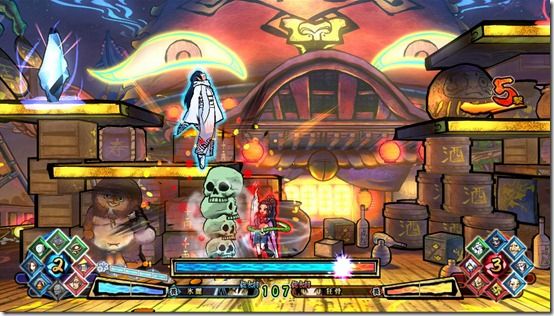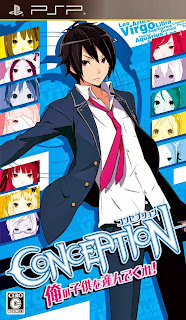As much of what I write about on this blog is rather strictly Japanese-based, I feel it's thematic to make a literature list exclusive to Japanese authors. I don't mean to say that Japanese authors are "more" than Western authors or anything like that, but from the books I've read by Japanese authors there certainly is an artistic-separation in comparison to Western authors, no different than as in videogames. Even though literature, which obliges a goal of expressing something universally human, the way these stories do so I felt was just a bit different than from what I've typically read. Rather, that it was a bit Japanese from what I've normally read, and because of so was just a little bit more perplexing and, at times, a little more meaningful also.
The Stories of Ibis - Hiroshi Yamamoto
Translated by Takami Nieda
To say The Stories of Ibis is a retelling of Issac Asimov's I, Robot wouldn't be doing the story justice, but in earnest The Stories of Ibis is exactly that. Rather though, where the two stories differ is on the degree of importance they place onto science-fiction, and humanity. With I, Robot, the core focus of the several short-stories was on revealing the overall growth of artificial-intelligence, how it begun as a purely mechanical series of operations but then evolved into a rapid-fire cognitive-processor that, through logic, hastily surpassed human intelligence. In I, Robot, the focus of the stories was presenting a rational prospect of how a man-made creation can surpass man itself.
Stories of Ibis does this also; the short-stories depicting the growth and rise of A.I. are told by a superior combat-robot to a young boy in a post-apocalyptic world where robots run not only the earth, but have expanded into the galaxy also. That said, what separates Ibis from I, Robot is that the stories are not so much about fixing a problem with an earlier robotic form (and thereby constructing a superior being), but expressing how human beings can cherish and rely on an artificial being no different than on a real-life person. What Ibis does in its short-stories is present an imperfect robot interacting with imperfect human-beings; each story climaxes not by "fixing" the early robotic-entity, but by sharing how human understanding and concern can also be the same as an artificial being's. In I, Robot, the overall conclusion is that robots probably would be better off without humans, but because they are built with the "Three Laws" that prevent them from harming humans they must instead create a life reasonable alongside humanity. In Ibis though, the conclusion is again that human-beings are, indeed, inferior to a logic-based species, but instead of being subjected to living alongside humans, the artificial-intelligence fosters and develops a reason why human-beings, in their imperfectness, are a significant, and beautiful, creature, one that is worth supporting, maintaining, and even learning from in their flawed pursuit of goodness.
Translated by Alexander O. Smith
Miyuke Miyabe is a writer with a diverse scope of works. While primarily a Mystery/Crime Thriller author (several of these works have been translated also; highly recommend All She Was Worth!), Miyabe has also expanded into Children's Fantasy. Beyond the phenomenal novelization of the videogame "Ico" in Ico: Castle of Mist, Miyabe also wrote Brave Story, a novel which won several awards, received an anime film-adaptation, and even went on to receive three different videogames adaptations and extensions ("Brave Story: New Traveler" (PSP) was localized in English).
So what is Brave Story? Outside of being an absolutely mammoth novel, Brave Story is a bizarrely dark, but immensely inspiring, fantasy-adventure that follows not the typical style of Fantasy literature as mastered by J.R. Tolkein, but the style found in retro Role-Playing games such as the classic "Final Fantasy" and "Tales" games. Without spoiling anything, the journey begins with fifth grader Wataru Mitani discovering that there are several very real, very mature problems in his parent's life, and that their issues are going to soon bring consequences irreparable and permanent amongst both themselves and Wataru. In a frantic attempt to prevent disaster, Wataru eventually finds himself in a fantastical world called Vision, a place rife with animalistic-persons, monsters whose innards are filled with gold, and a series of quests that ultimately bring Wataru closer to finding the Goddess, the person who can restore the equilibrium in his real life.
Brave Story is nothing short from an epic. At over a thousand pages, Brave Story's conclusion brings into focus highly prominent philosophies and arguments that span across destiny, good and evil, child-rearing, and much more. While an intimidating novel in size, the journey of Brave Story is one equally compelling and rewarding for the attention required in undertaking it, and holds significance for both young and adult readers alike.
Welcome to the NHK - Tatsuhiko Takimoto
Translated by Lindsey Akashi
If you're familiar with "Tragic Individual" novels such as The Catcher in the Rye or The Perks of Being a Wallflower, there's a similar story here in Welcome to the NHK. That said, NHK is straight-up crazy, and is a downright delight to read.
The story follows Satou, a hikikomori (Japanese term for "shut-in," or Agoraphobe) who has strictly given up on becoming a meaningful human-being. At the age of twenty-two he has spent the last four years of his life holed up in his studio-apartment, living off an allowance by his parents and spending it on drugs, alcohol and pornography to get through each day. As a college dropout without any skills or ambition, Satou is truly living up the negative connotations prescribed a hikikomori, and is in some bizarre way seemingly proud of it despite his constant wallowing of being such a person.
The plot kicks-off with a letter from Satou's mother stating that, in a month, his allowance is to be cut-off. In a desperate attempt to become a functional human-being, Satou manages to leave his apartment and go looking for a job, where he is then judged and acquired by a mysterious teenage girl named Misaki. Seeing through Satou, she gauges him a "worthless hikikomori" and decides to enlist him into a strange program of her own called "Escaping the Hikikomori Lifestyle." Essentially, the story follows a see-saw pattern where Satou attempts to trick Misaki into believing he is a "creator," someone professional and artistic, and Misaki gradually releases why it is exactly she is helping so pathetic a human-being.
It's a challenging story to create a synopsis over, but really this story is just hilarious, sad, and inspiring throughout, frequently all at the same time also. With its focus being on rather depressing realities of sex, disappointment, and angst, Welcome to the NHK tells a uncomfortably raw tale that returns to light the question of why "bad things" even exist, and why so many of us are tortured by things we've no control over.
Translated by Glynne Walley
You may not know it, but you're probably familiar with Koji Suzuki. This is the man who wrote the original Ringu novel, which was later made into the hugely successful horror film that placed Japanese Yurei ghosts into the Hollywood spotlight. As "The Ring" movie was terrific, so also is the original novel it is based upon; but, instead of targeting that, I'd rather mention Suzuki's lesser acclaimed short-story collection.
Dark Water is a short-story collection that inserts a same two elements throughout each of it's several stories; dark water, and ghosts. Every story orbits around this basis of water and spirit, and while it makes the gruesome stories somewhat predictable it also instills an oddly compelling layer of suspense. As these short-stories are indeed Horror, the moment water is mentioned you know that something bizarre, probably violent, and from beyond the grave is nearby, and exactly who and why the spirit exists is the thrilling mystery unraveled in each story.
While it's traditional for short-story collections to uphold a certain theme, I've never encountered one so determinedly unified. While at first I was rather confused and judgmental of the consistent two elements, by the end of the collection I was highly impressed; seeing how a sole two consistencies can create so many extensively independent tales from one another was almost as much a treat as the terrifying stories themselves.
Translated by Jay Rubin
Haruki Murakami is a highly famous writer whose novels are actually more warmly received in the west than they are in Japan. Called the "Japanese Kafka," Murakami's stories nestle closely to Surrealism, and unwind into rather sentimental, artful conclusions that usually express either Nihilism, or just plain misery of being a human-being. While The Wind-Up Bird Chronicle and Norwegian Wood are the more famous of Murakami's works, like Dark Water above I'd rather mention one of Murakami's short-story collections; the range of character and creativity that exists in each story is of such magnitude that I have never come across a short-story collection I admire more.
after the quake's stories each take place within a distant proximity of the Kobe earthquake in Japan of 1995, a tragic event that took more than 6,000 lives and decimated hundreds of Kobe homes and offices. Despite each character not being directly affected from the earthquake, by being distant witness' to the scope of the destruction there tears open a hole in each character's own heart or values. Most of the stories don't appear to have any resolution at their conclusion, or even reveal what exactly it is that distorts each character. It's in the prose, though, that there exists a profound, suffocating sadness, and following the chain of somber events and words each character enacts while floating inside of the minimal and depressing tone there is formulated a strangely coherent understanding. It isn't so much about recognizing "why" things are awful, or what can be done to fix them, but rather that misery is as solid a reality as being successful; that all things are transitory, and how hope and belief is often no more than a futile delusional.
Attempting to condense any of the short-stories into brief examples of what makes them so significant would sincerely do them injustice; what I will say is that, the next time you're at the bookstore, grab this collection and read through the short story "all god's children can dance." Just trust this distant blogger; you won't be disappointed.





















